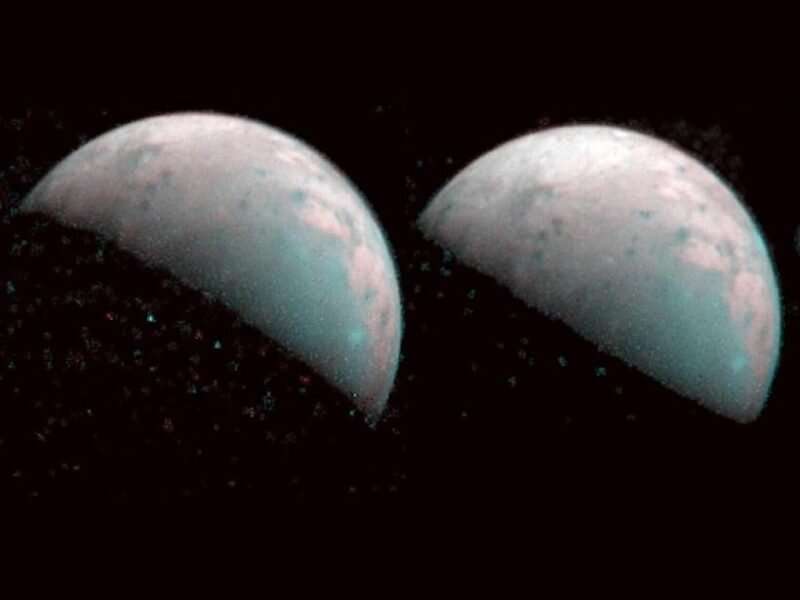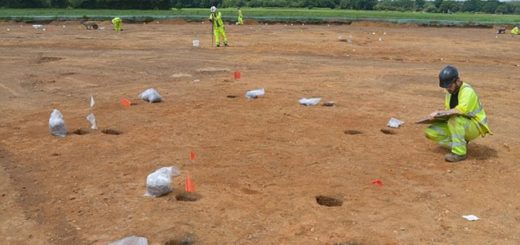Juno maps water ice across northern Ganymede

Jupiter’s moon Ganymede is the largest planetary satellite in the solar system. It’s also one of the most intriguing: Ganymede is the only moon with its own magnetic field, it is the most differentiated of all moons, and it likely possesses a subsurface ocean of liquid water. It was studied by the early Jupiter flybys made by the Pioneer and Voyager spacecraft, but our understanding today rests largely on observations made by NASA’s Galileo orbiter from 1995 to 2003.
Mura et al. now report some of the first in situ observations of Ganymede since the end of the Galileo mission. They used the Jovian Infrared Auroral Mapper (JIRAM) on board NASA’s Juno spacecraft to take images and spectra of the moon’s north polar region. On 26 December 2019, Juno passed Ganymede at a distance of about 100,000 kilometers, enabling JIRAM to map this region at a spatial resolution of up to 23 kilometers per pixel.
As Juno flies past Ganymede, the spacecraft can observe physical locations on the moon’s surface from a variety of angles. By comparing the brightness of these regions across a range of observation and illumination geometries, the authors developed a photometric model for Ganymede’s surface reflectance. They observed that wavelength-dependent reflectance relationships sometimes break down in the vicinity of relatively fresh craters, perhaps because of a larger average size of ice grains in these regions.
Combining their model with spectral observations of the 2-micrometer water ice absorption band allowed the authors to map the distribution of water ice in the north polar region. Where these estimates overlapped with maps derived from Earth-based telescopic observations, the researchers found largely good agreement. This congruence enabled them to extend the global water ice map for Ganymede to much more northerly latitudes.
Observations in other spectral bands also revealed the presence of nonwater chemical species on the surface of Ganymede, including possible detections of hydrated magnesium salts, ammonia, carbon dioxide, and a range of organic molecules.



 Creators of mankind
Creators of mankind Description of “Tall white aliens”
Description of “Tall white aliens” Where they came from?
Where they came from? About hostile civilizations
About hostile civilizations The war for the Earth
The war for the Earth “Tall white aliens” about eternal life
“Tall white aliens” about eternal life Video: “Nordic aliens”
Video: “Nordic aliens” Aliens
Aliens Alien encounters
Alien encounters The aliens base
The aliens base UFO
UFO Technology UFO
Technology UFO Underground civilization
Underground civilization Ancient alien artifacts
Ancient alien artifacts Military and UFO
Military and UFO Mysteries and hypotheses
Mysteries and hypotheses Scientific facts
Scientific facts


















